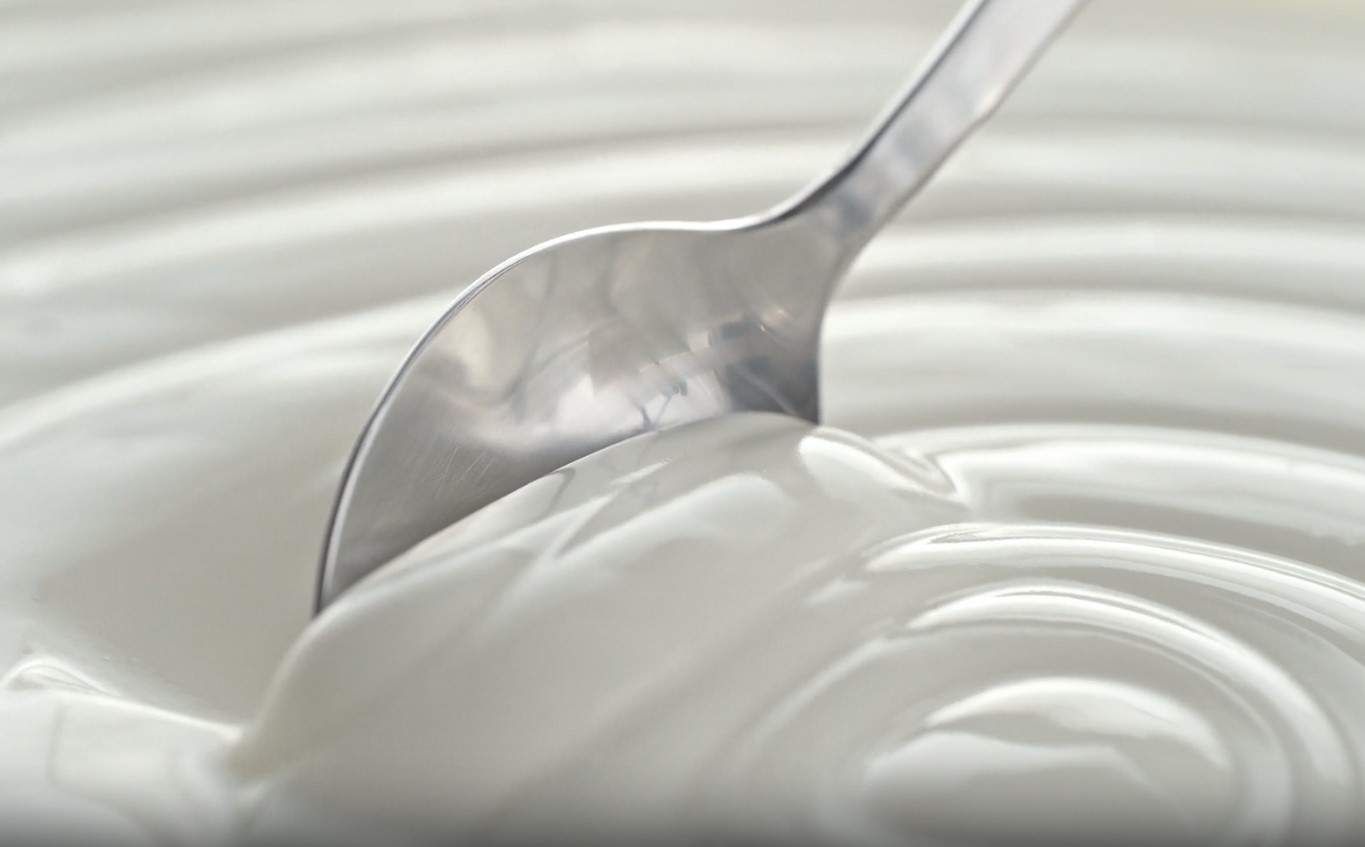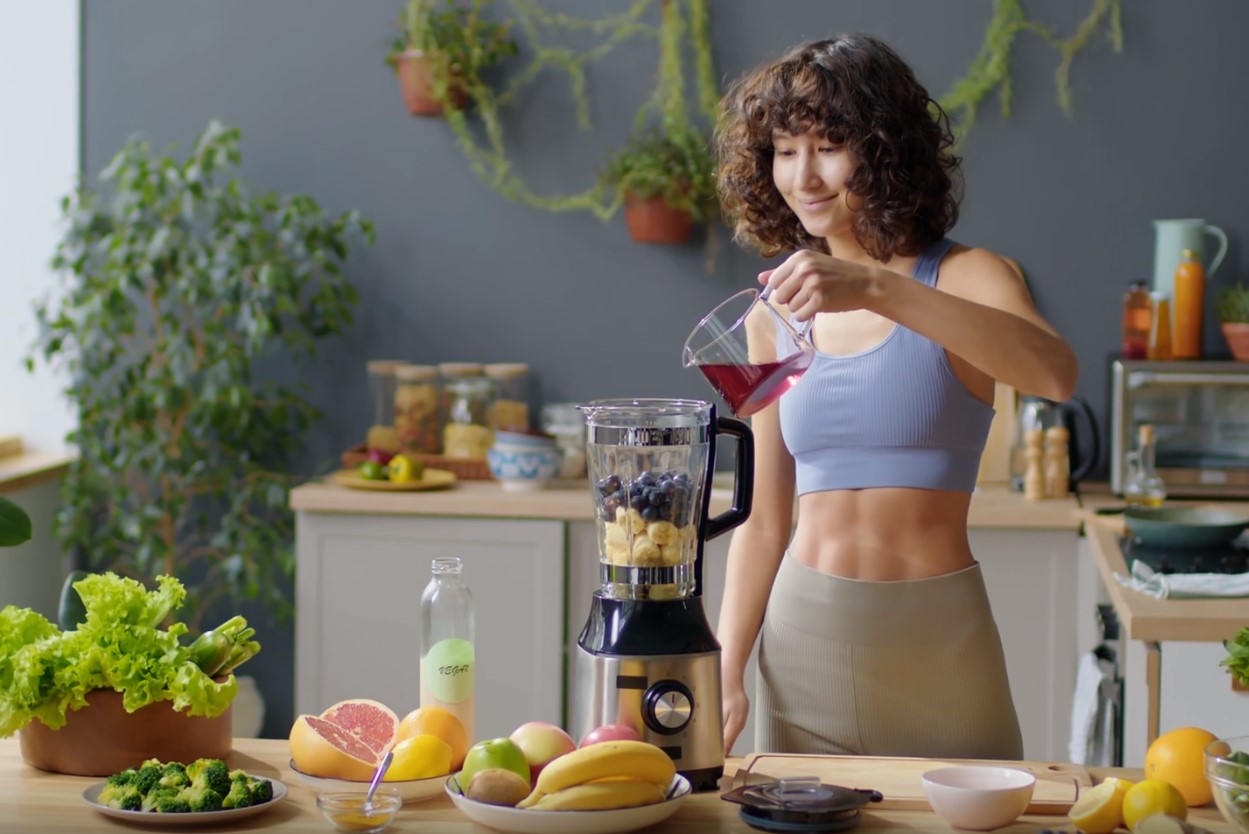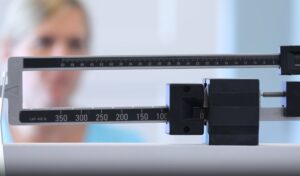When you want to achieve a fuller, more sculpted butt, what you eat plays a crucial role. While exercise is important, your diet fundamentally supports muscle growth and fat distribution, essential for a bootylicious body.
This comprehensive guide explores the best foods to incorporate into your diet for enhancing your buttocks, combining scientific insights and practical tips. Whether you’re a fitness enthusiast or just starting out, these dietary choices will empower you to achieve your body goals.
6 Superfoods for Your Booty
Some specific foods are known for their butt-enhancing properties. These include:
1. Greek Yogurt

Greek yogurt is packed with protein, crucial for muscle repair and growth, especially in the gluteal muscles. It’s also rich in calcium, supporting strong bones, which is essential for heavy lifting and strenuous exercises targeting the buttocks.
Moreover, Greek yogurt contains probiotics that aid in digestion, ensuring your body efficiently absorbs all the nutrients necessary for booty gains.
2. Quinoa
Quinoa is a complete protein, containing all nine essential amino acids, making it an excellent food for overall muscle health, including your booty. It’s also a fantastic carbohydrate source, providing sustained energy for longer workout sessions.
Furthermore, quinoa is rich in fiber and minerals like magnesium, which help in muscle recovery and reduce post-workout soreness.
3. Spinach

Spinach is high in iron, essential for oxygenating your muscles during exercise, including those in your buttocks. It’s also packed with magnesium, which plays a crucial role in muscle function and helps prevent cramps during workouts.
Additionally, spinach contains antioxidants that help reduce inflammation, aiding in quicker recovery and growth of the gluteal muscles.
4. Sweet Potatoes
They are an excellent carbohydrate source, providing energy for prolonged workouts. Sweet potatoes are also rich in vitamins C and B6, which aid in muscle recovery and promote overall health. Plus, their high fiber content ensures steady energy release, keeping you fueled during booty-building exercises.
5. Eggs
Eggs are a top-notch source of high-quality protein, essential for muscle growth and repair. They also contain vitamin D and healthy fats, which are important for maintaining muscle health. The amino acids in eggs help rebuild and strengthen the muscle fibers, especially important for a firm, toned booty.
6. Salmon

Salmon is a great source of omega-3 fatty acids, which are known for reducing inflammation and aiding muscle recovery. It’s also rich in protein, crucial for muscle growth, including the glutes. Plus, the vitamin D content in salmon supports strong bones, a critical aspect for anyone focusing on booty-enhancing exercises.
Creating a Balanced Diet Plan
It’s vital to understand the basics of muscle growth and fat distribution. The buttocks consist mainly of the gluteal muscles – gluteus maximus, medius, and minimus. To grow these muscles, your body needs adequate protein, carbs, and healthy fats, alongside regular exercise.
A balanced diet is key. Ensure your meals are well-rounded, incorporating proteins, carbs, and healthy fats. Also, consider your calorie intake and adjust it according to your fitness goals.
Protein: The Building Block

Proteins are the building blocks of muscle. They repair and build muscle fibers, especially after workouts. High-quality protein sources include:
- Chicken Breast: Lean and packed with protein, chicken breast aids in muscle repair and growth. It’s also low in fat and calories, making it ideal for weight management. Versatile in cooking, it can be grilled, baked, or stir-fried for various meals.
- Fish: Options like salmon and tuna are not only high in protein but also rich in omega-3 fatty acids, beneficial for muscle health. These fish also contain vitamins D and B12, crucial for bone and blood health. Regular consumption can improve cardiovascular health and reduce inflammation.
- Legumes: Beans, lentils, and chickpeas are plant-based protein sources, also offering fiber and essential nutrients. They are heart-friendly, help stabilize blood sugar levels, and are affordable protein options. Legumes can be used in salads, stews, or as meat substitutes in many recipes.
Carbohydrates: The Energy Source

Carbohydrates fuel your workouts and help with recovery. Opt for complex carbs like:
- Whole Grains: Brown rice, quinoa, and whole wheat products provide sustained energy. They also contain B vitamins and minerals like iron and magnesium. Whole grains aid in digestion and can lower the risk of chronic diseases.
- Sweet Potatoes: A great source of vitamins, fiber, and carbs, they support muscle growth and recovery. Sweet potatoes are also high in antioxidants, which protect your body from free radicals. They can be roasted, mashed, or baked for a variety of dishes.
- Oats: Perfect for breakfast, oats offer energy and are packed with essential nutrients. They’re rich in antioxidants and can help lower cholesterol levels. Oats are also versatile, used in baking, smoothies, or traditional porridge.
Healthy Fats: Essential for Growth

Fats are crucial for hormone production, including hormones like testosterone that play a role in muscle growth. Healthy fat sources include:
- Avocados: Loaded with monounsaturated fats, they promote overall health and muscle growth. Avocados also provide fiber and potassium, supporting heart health and digestion. They can be added to salads, sandwiches, or eaten on their own.
- Nuts and Seeds: Almonds, chia seeds, and flaxseeds are excellent for their healthy fats and protein. They also offer essential minerals like calcium and magnesium. Nuts and seeds can be added to yogurt, salads, or eaten as a snack.
- Olive Oil: A heart-healthy fat that can be easily incorporated into your diet. It’s rich in antioxidants and can help reduce the risk of chronic diseases. Olive oil is perfect for salad dressings, cooking, or as a dip for bread.
FAQs
Can dairy products help in enhancing buttock size?
Yes, certain dairy products can be beneficial. For example, cottage cheese is high in protein and essential nutrients that aid in muscle growth and recovery. However, if you’re lactose intolerant or following a vegan diet, there are plenty of plant-based alternatives rich in protein, such as soy milk and almond milk.
Are there any fruits that specifically help in growing gluteal muscles?
While no fruit directly causes muscle growth, fruits like bananas, avocados, and berries can support the process. Bananas provide energy and potassium, avocados are rich in healthy fats, and berries are packed with antioxidants that aid in recovery and reduce inflammation.
How often should I eat these foods for the best results?
Incorporate a variety of these foods into your daily diet. It’s not just about eating them occasionally but making them a regular part of your meals. Balance is important; ensure you’re getting a mix of protein, carbs, and healthy fats every day.
Can supplements replace these foods?
While supplements like protein powders can be beneficial, especially for increasing your protein intake, they should not replace whole foods. Whole foods provide a range of nutrients and benefits that supplements alone can’t offer. It’s best to use supplements in conjunction with a balanced diet.
Is it possible to get a bigger butt just by diet without exercise?
While diet plays a crucial role in muscle growth and fat distribution, exercise is essential for specifically targeting and building the gluteal muscles. A combination of both is the most effective way to achieve a bigger, toned butt.
Are there any risks involved in changing my diet to increase my butt size?
If you make changes to your diet, it’s important to ensure that you still get a balanced intake of nutrients. Overemphasis on certain foods or neglecting others can lead to nutritional imbalances.
It’s always a good idea to consult with a nutritionist or healthcare provider before making significant changes to your diet, especially if you have any underlying health conditions.
The Bottom Line
Achieving a bigger, well-toned butt is a combination of the right diet and exercise. By incorporating these foods into your daily regimen, you’ll provide your body with the necessary nutrients to enhance your buttocks.
In addition to dietary choices, understanding the right exercises and techniques can further enhance your efforts to sculpt
Always keep in mind that consistency is key, and patience is crucial. Embrace the journey, and soon you’ll see the results of your dedication and hard work.













